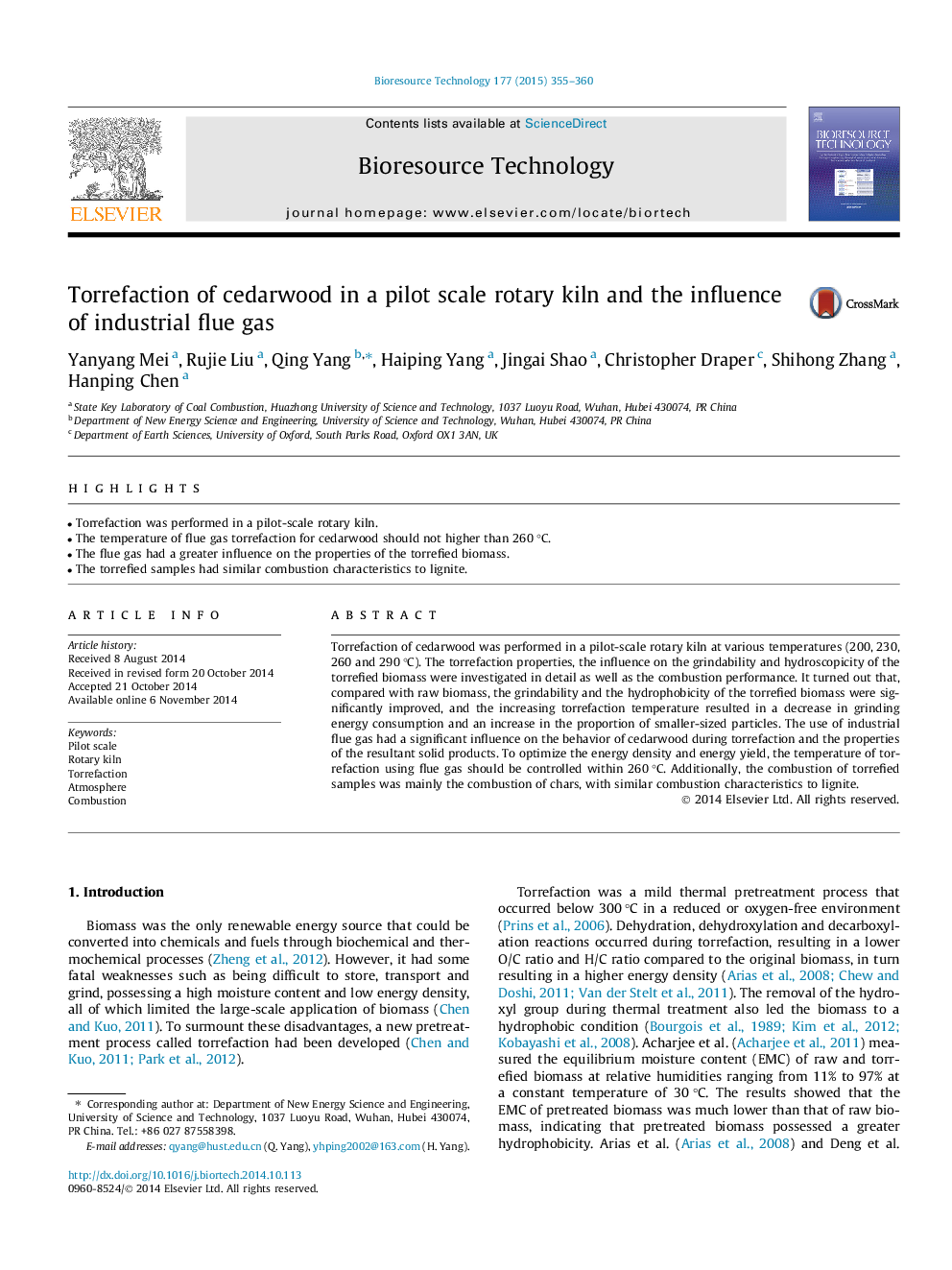| Article ID | Journal | Published Year | Pages | File Type |
|---|---|---|---|---|
| 680246 | Bioresource Technology | 2015 | 6 Pages |
•Torrefaction was performed in a pilot-scale rotary kiln.•The temperature of flue gas torrefaction for cedarwood should not higher than 260 °C.•The flue gas had a greater influence on the properties of the torrefied biomass.•The torrefied samples had similar combustion characteristics to lignite.
Torrefaction of cedarwood was performed in a pilot-scale rotary kiln at various temperatures (200, 230, 260 and 290 °C). The torrefaction properties, the influence on the grindability and hydroscopicity of the torrefied biomass were investigated in detail as well as the combustion performance. It turned out that, compared with raw biomass, the grindability and the hydrophobicity of the torrefied biomass were significantly improved, and the increasing torrefaction temperature resulted in a decrease in grinding energy consumption and an increase in the proportion of smaller-sized particles. The use of industrial flue gas had a significant influence on the behavior of cedarwood during torrefaction and the properties of the resultant solid products. To optimize the energy density and energy yield, the temperature of torrefaction using flue gas should be controlled within 260 °C. Additionally, the combustion of torrefied samples was mainly the combustion of chars, with similar combustion characteristics to lignite.
